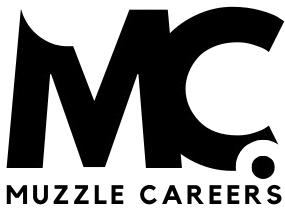The H-1B visa is the main pathway for skilled foreign workers, especially in tech, to land jobs in the United States. Until now, employers only paid a few administrative fees under $2,000, which made it easy for both big companies and struggling startups to tap global talent. But this week, the rules of the game shifted dramatically.
Trump’s new order slaps a $100,000 annual fee on every H-1B sponsorship. That’s not a 10% increase or even a 50% bump — it’s a 6,600% nuclear explosion on the economics of hiring international talent in the US.
But here’s what the news stories are missing: This isn’t just about big tech companies tightening their belts. Amazon, Google, Microsoft — they’ll grumble and pay. They have to. Their entire AI and cloud infrastructure depends on global talent pipelines.
The real carnage? You know that startup in Austin that was excited to sponsor you? The mid-stage company in Denver that saw your GitHub and wanted to move fast? That fintech in Boston that finally understood your specialized skills? They just got priced out of the conversation entirely.
The Companies That Will Still Sponsor You (And Those That Won’t)
Let me break down the new landscape because your strategy needs to change immediately:
Still in the game:
- FAANG companies (they’ll absorb the cost)
- Major consulting firms (Deloitte, McKinsey — they bill clients enough to handle it)
- Large banks and financial institutions
- Big pharma and established biotech
- Defense contractors (ironically, given the “America First” messaging)
Probably out:
- Startups with less than $10M in funding
- Mid-stage companies (50-200 employees)
- Most agencies and service companies
- Regional businesses outside major tech hubs
- Any company that was already hesitant about sponsorship
I’ve watched companies spend months evaluating H-1B candidates, only to back out over much smaller cost concerns. Now you’re asking them to commit $600,000 over six years before they even know if you’ll stay.
Your New Reality: Four Paths Forward
Path 1: Target the Deep Pockets
Focus entirely on companies that can absorb this cost without flinching. Yes, competition just got fiercer, but these roles still exist. Your application needs to be absolutely bulletproof now — no typos, no generic cover letters, no hoping your resume speaks for itself.
Path 2: The Canada Detour
I’m seeing smart people pivot to Canada’s Express Entry system, then transfer internally to US offices after 2-3 years. It’s longer, it’s messier, but the math works. Canadian tech salaries aren’t Silicon Valley money, but they’re not terrible, and you’re building North American experience.
Path 3: The Contractor Angle
Some companies will hire you as a contractor through your home country office or a third-party agency. It’s not ideal — no benefits, less security, tax complications — but it gets you in the door and building relationships. I’ve seen people convert these arrangements into full sponsorships when companies realize they can’t live without them.
Path 4: The Advanced Degree Play
If you’re early in your career, getting a US master’s degree just became significantly more valuable. Yes, it’s expensive and time-consuming, but you get the OPT period to prove yourself, and companies are more likely to sponsor someone they’ve already invested in training.
What This Means for Different Experience Levels
New Graduates: You’re in the toughest spot. Companies need overwhelming evidence you’re worth a $100K annual bet. Focus on demonstrating measurable impact through internships, side projects, or open-source contributions. Generic applications won’t cut it anymore.
Mid-Level (2-5 years): You have the best chance if you can articulate specific problems you’ve solved and revenue you’ve generated. Document everything. Build a portfolio that screams “This person will make us more than $100K annually.”
Senior Level: Companies will pay for proven talent, but you need to be prepared for longer interview processes and more scrutiny. They’re going to want references from previous colleagues and concrete examples of your leadership impact.
The Timing Game Nobody’s Talking About
Here’s something most people are missing: applications submitted before September 21st are still under the old fee structure. If you’re in active conversations with companies, push hard to get that paperwork filed immediately.
For next year’s cap season (applications typically due in March), you’re now competing in a completely different game. Companies will be more selective about who they even consider, let alone sponsor.
What HR Teams Are Saying Behind Closed Doors
I’ve been talking to talent acquisition teams all week, and here’s what they’re not announcing publicly: Many are implementing informal quotas on international hiring. Not because they don’t want global talent, but because they need to manage this massive cost increase.
Some are moving toward “sponsorship tiers” — they’ll pay the $100K for senior engineers and specialized roles, but new grad positions are becoming domestic-only by default.
Others are expanding their international offices specifically to avoid US visa costs entirely. That role in Austin might become a role in Toronto or Dublin instead.
Your Action Plan (Starting Today)
Immediate (Next 30 Days):
- If you have any pending applications, follow up aggressively
- Research companies’ international hiring policies (many are updating their career pages)
- Start building relationships with recruiters at large companies
- Update your LinkedIn to highlight quantifiable achievements
Medium-term (Next 3-6 Months):
- Consider additional certifications or specializations that make you irreplaceable
- Build a portfolio of work that demonstrates clear business value
- Network strategically with people at companies that can afford the new fees
- Explore Canada/EU opportunities as backup plans
Long-term (Next Year):
- If you’re considering graduate school, research programs with strong industry partnerships
- Build expertise in areas where skilled workers are genuinely scarce (AI/ML, cybersecurity, biotech)
- Consider entrepreneurship — the new “Gold Card” visa starts at $1M investment, but there might be opportunities for innovative funding structures
The Hard Truth About What’s Really Happening
This isn’t just about economics — it’s about fundamentally changing who gets to build their career in America. The message is clear: if you’re not valuable enough for a company to bet $600,000 on you over six years, you’re not welcome.
That’s harsh, but it’s also clarifying. The companies that sponsor you under this system genuinely want you there. The roles you’ll get will likely come with higher salaries and more responsibility because the cost of hiring you forces companies to maximize your impact.
Looking Ahead: What to Watch For
Keep an eye on how other countries respond. Canada, Australia, and EU nations are already positioning themselves as alternatives for global talent. Some might fast-track programs specifically for people affected by these changes.
Also watch for legal challenges. Immigration lawyers are already questioning whether this fee structure violates existing trade agreements or anti-discrimination principles.
The startup ecosystem will adapt too. I expect to see more companies incorporating in Canada with US subsidiaries, or exploring alternative visa categories that aren’t subject to these fees.
The Bottom Line
Yes, this sucks if you were counting on the H-1B lottery as your path to American employment. But opportunities still exist — they’re just concentrated among fewer companies and require higher performance bars.
The people who will succeed in this new reality are those who move quickly, target strategically, and can demonstrate clear business value from day one. The days of hoping someone takes a chance on your potential are over. Now you need to prove you’re worth a quarter-million-dollar investment.
If that sounds impossible, remember: companies are still hiring international talent because they genuinely need skills they can’t find domestically. The bar is higher, but it’s not insurmountable.
Start adapting your strategy today. The people who wait for this to “blow over” will find themselves watching opportunities from the sidelines while others figured out how to play the new game.
The American dream didn’t die this week — it just got a lot more expensive to pursue.
Discover more from MUZZLECAREERS
Subscribe to get the latest posts sent to your email.








